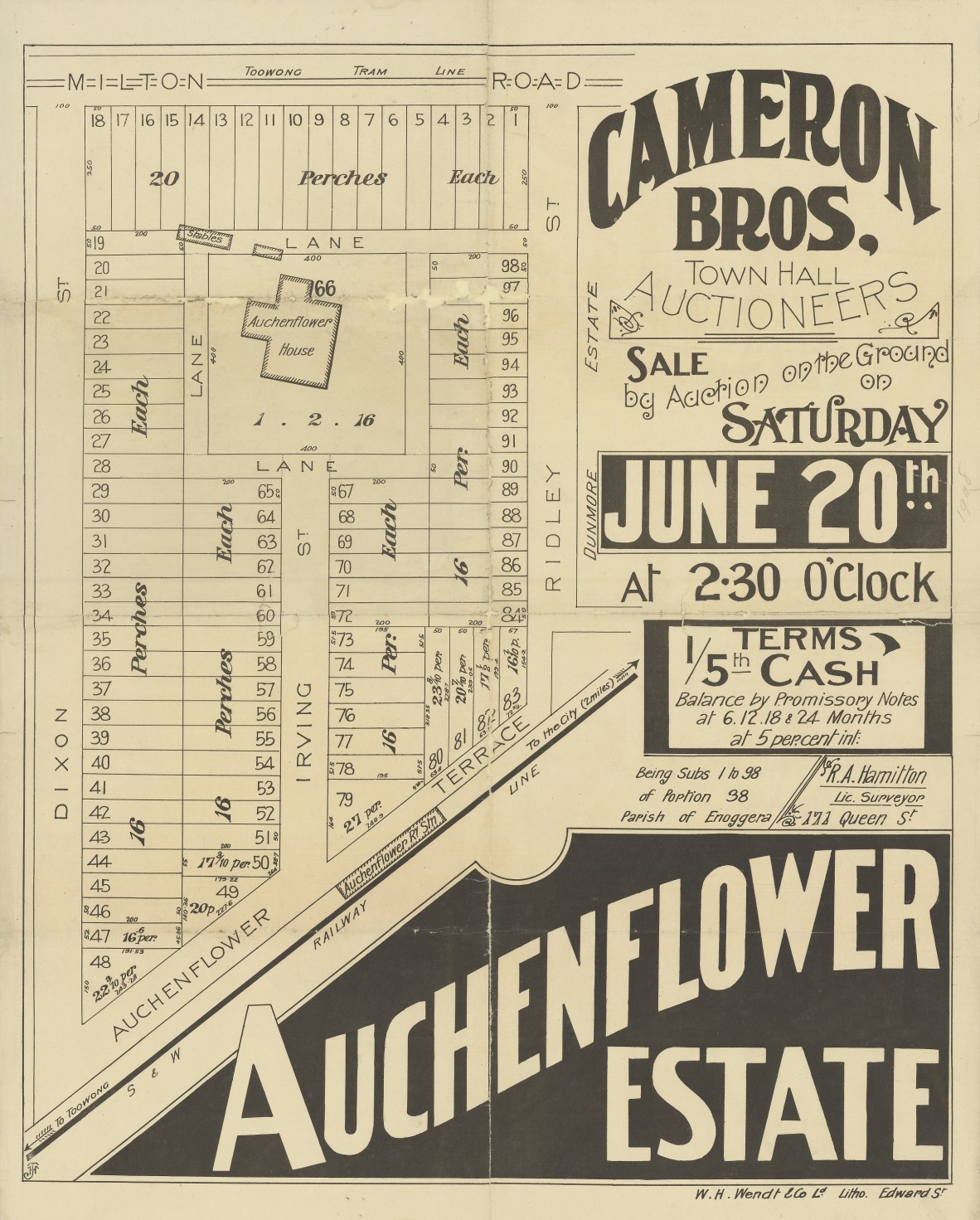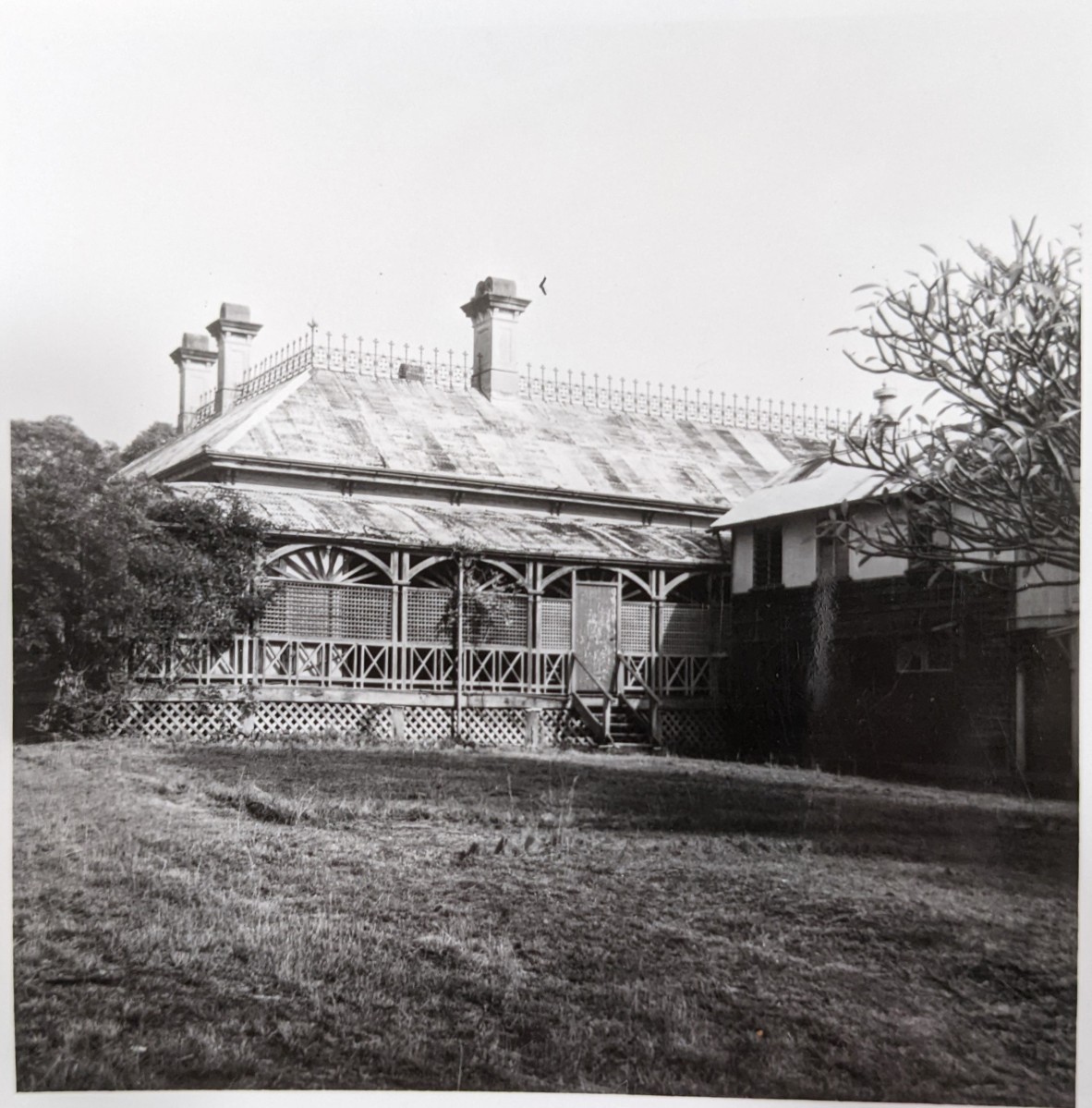The many lives of Auchenflower House
By Ellen Newcombe, Librarian, Library and Client Services | 18 November 2022
Houses can live many lives, but very few tend to lead them across three different locations.
The question, which came to us through the Ask Us enquiry service, at first seemed like a straightforward house history. The client was looking any information about or photographs of Auchenflower House, once located off Ridley St, Auchenflower. As it turned out the history of Auchenflower House was a little more unusual.
Auchenflower House, which was home to the families of three Queensland Premiers and gave its name to the suburb in which it was built, was moved first across the river to an open-air museum in Norman Park, and now sits nestled among the vines of a winery at the foot of Mount Tamborine.
The early days of Auchenflower House
Ironmonger and businessman John Ward built a house in, what was then, Milton in 1876. It was purchased in 1880 by Thomas McIlwraith, not yet sir, but recently Premier of Queensland. He extensively renovated the house and gave it the name Auchenflower, after his family’s farm in Ayrshire, Scotland.
A contemporary description from The Queenslander describes a grand house, with large grounds including rolling lawns, lush gardens, and artificial lakes. It was a house made for entertaining. A gossip column in the Catholic Advocate compared Auchenflower House in its heyday to the stately homes in “the more favoured countries of Europe”. In addition to the original main building with its library, drawing room, boudoir, dining room and main bedroom suites, when the McIlwraiths renovated they added many features to make it fit for a prominent politician and his family.
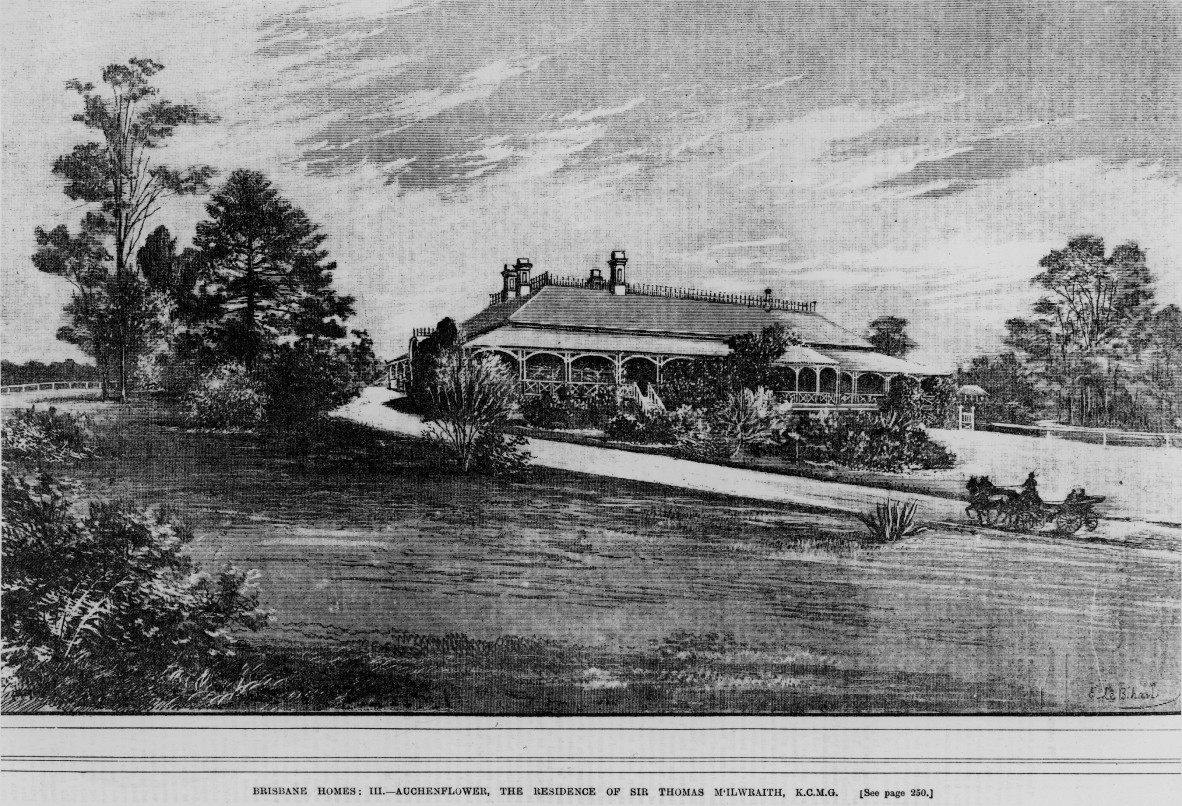
Sketch of Auchenflower House, Brisbane, 1891. John Oxley Library, State Library of Queensland. Negative number 19273.
After McIlwraith left Queensland for England in 1895 Auchenflower House had several different residents before coming into the ownership of Carl Palmer and his wife Minnie Lightoller in 1911. Palmer was the son of Sir Arthur Palmer, who had also been Premier of Queensland and had been a political colleague and relative by marriage of McIlwraith.
In 1918 Auchenflower House was purchased by another Premier, T.J. Ryan, who lived there until his death in 1921. His widow, Lily Virginia Ryan, who felt that the house should be used to benefit the local community, sold the house to the Carmelite Order of Nuns in 1926, who converted the building into a convent. As one last hurrah before being converted into a closed cloister for the Carmelites, a jazz evening was held at Auchenflower House on Friday 8 July 1927. Archbishop of Brisbane, Sir James Duhig blessed and opened the monastery at a ceremony on 31 July 1927. It remained a Carmelite convent until 1965.
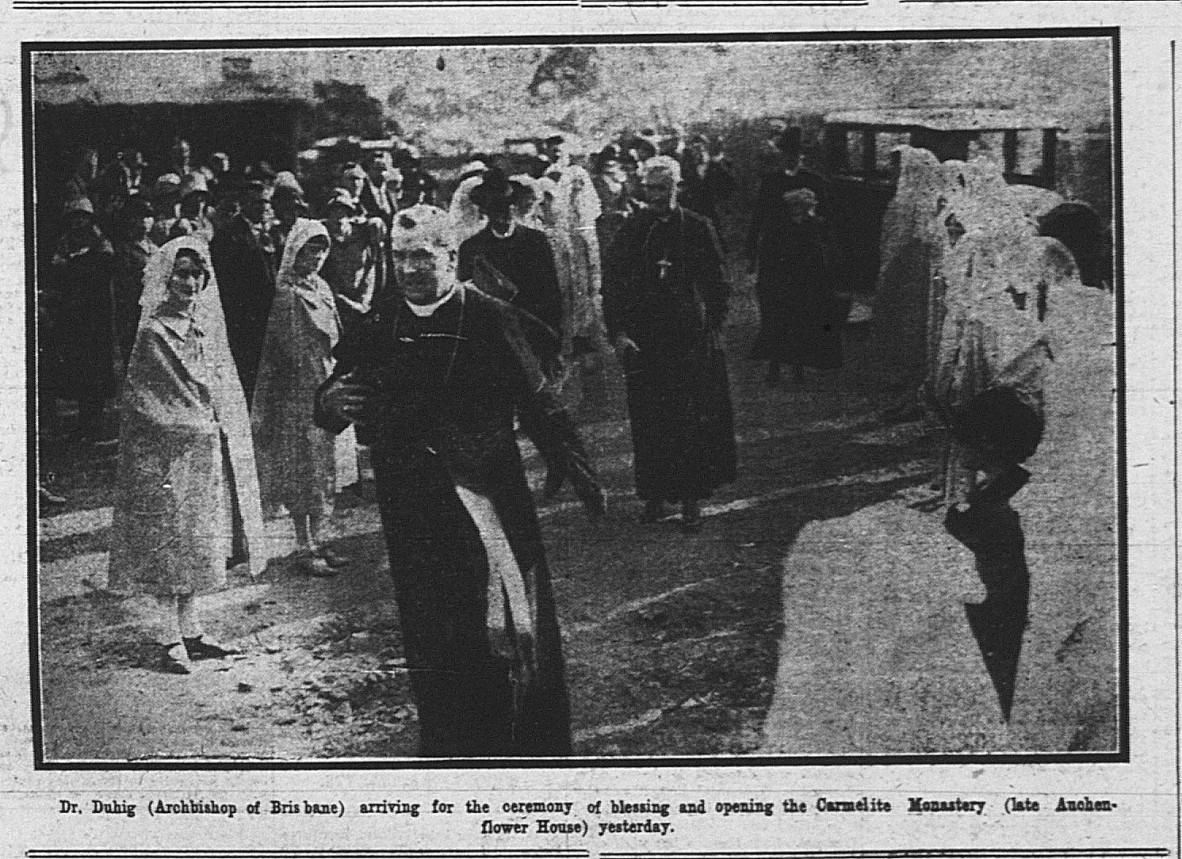
Brisbane Courier 1 Aug 1927, p 16 http://nla.gov.au/nla.news-article21867526
Auchenflower, the suburb
The house was such a dominant feature of the area that it would give its name to the train station, which opened in 1887. In 1908 as the population grew the land surrounding the property was subdivided and sold off, collectively known as Auchenflower Estate.
Over time the area around the house came to known as the suburb of Auchenflower. From 1905 onwards the Queensland Post Office Directory lists Auchenflower as a suburb distinct from Milton and Toowong. However, it was a relatively small suburb, and in 1975 the Queensland Place Names Board re-classified Auchenflower as a locality of Toowong rather than a suburb in its own right. Following a campaign by locals it was returned to suburb status as of 16 November 1986.
Earlystreet Village, Norman Park
In 1965 Auchenflower House was bought by the Jesuit Fathers of St. Ignatius Loyola Church, Catholic Parish of Toowong. Photographs from this era show a rundown building with peeling paint and rusting tin roof. Nothing like the grand home it had once been.
In 1969 much of the house was demolished, except for the ballroom and billiard room which were bought by Stanley Hancock and moved to Earlystreet Village, a historical village on, appropriately, McIlwraith Avenue in Norman Park.
Earlystreet was an outdoor museum, a collection of original buildings from all over Queensland as well as reproductions, built on the grounds of Eulalia, another grand old house. There was Stromness, built in 1865 in Kangaroo Point; Rose Cottage, an early pioneer slab hut; The General Store; and, of course, Eulalia, built in 1889, and the rescued remains of Auchenflower House. The original coach house from Auchenflower House, built as part of McIlwraith’s renovations, had been lost, but there was a replica built at Earlystreet.
Earlystreet was a popular venue for weddings, conventions, and concerts. It was also a destination for overseas tourists.
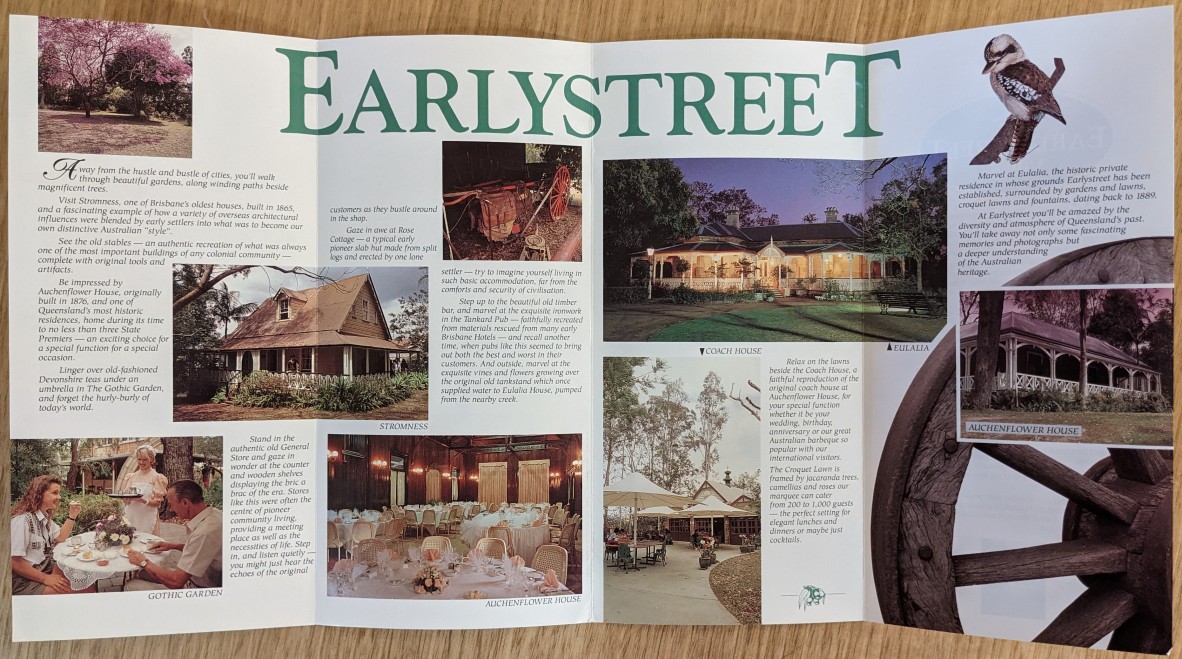
7780 Daphne Kingston Photograph Collection 1940-1995, Earlystreet Brochure http://onesearch.slq.qld.gov.au/permalink/f/1oppkg1/slq_alma21148488330002061
When Earlystreet closed in 1998 the buildings that had been moved there were once again in need of new homes. And so, Auchenflower House was bought and restored by David and Janette Bladin. They relocated the property to Albert River Wines in Mount Tamborine where it currently remains, roughly 60 kilometres from where it was first built and the suburb to which it gave its name.
If you’re interested in the history of your house visit State Library’s house histories webpage and explore the range of resources that are available for your search. It may not be as well travelled as Auchenflower House or have had multiple state premiers for residents, but you never know what stories you may stumble upon.
For help with your house history research, visit us at State Library, or use our Ask Us service for online research assistance.
Collections
27438 Bourne and Groom Family Photographs and Reminiscences 1904-1998 http://onesearch.slq.qld.gov.au/permalink/f/1oppkg1/slq_alma21148651160002061
7780 Daphne Kingston Photograph Collection 1940-1995 http://onesearch.slq.qld.gov.au/permalink/f/1oppkg1/slq_alma21148488330002061
TR 2041 Early Street Historical Village Photographs http://onesearch.slq.qld.gov.au/permalink/f/1oppkg1/slq_alma21148638540002061
Auchenflower Estate, R. A Hamilton ; Cameron Bros. ; Brisbane Qld. : W. H. Wendt & Co., Litho. ; 1908, http://hdl.handle.net/10462/deriv/282083
Photographs of Brisbane residences http://onesearch.slq.qld.gov.au/permalink/f/1oppkg1/slq_alma21114003040002061
Pearn, John. Auchenflower - the Suburb and the Name : A History of Auchenflower, Brisbane, Australia / John Pearn. (1997). http://onesearch.slq.qld.gov.au/permalink/f/1oppkg1/slq_alma21121295850002061
More Information
One Search catalogue - http://onesearch.slq.qld.gov.au
Ask a librarian - https://www.slq.qld.gov.au/plan-my-visit/services/ask-librarian
Comments
Your email address will not be published.
We welcome relevant, respectful comments.
